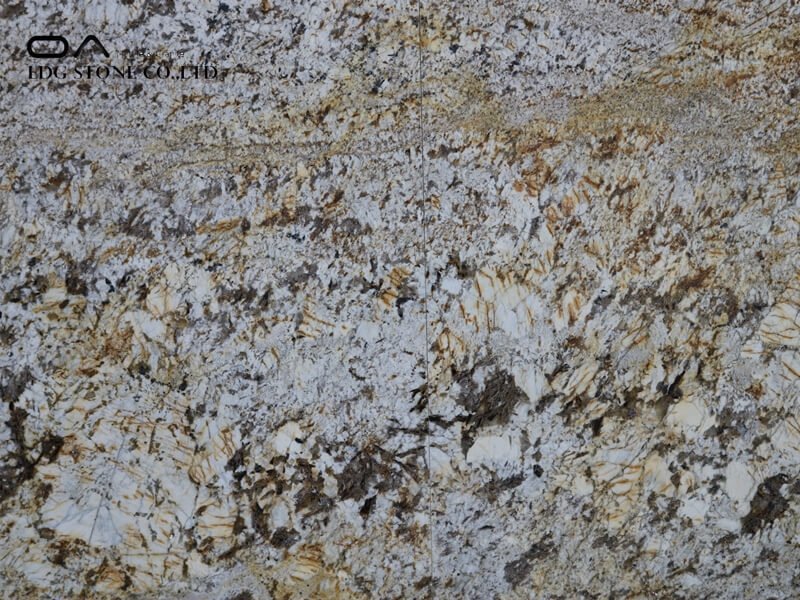Natural stone is mainly divided into marble and granite. In a broad sense, everything with texture is called “marble”; the one with spots is called “granite”. In a narrow sense, marble refers to the stone produced in Dali, Yunnan. In fact, not many stone materials all over the country are from Dali.
The two can also be distinguished from the geological concept. Granite is an igneous rock, also called acid crystalline plutonic rock. It is the most widely distributed type of igneous rock. It is composed of feldspar, quartz, and mica. The rock is hard and compact. Its main ingredient is silica, which accounts for about 650/~75%.
The so-called igneous rock is the rock formed by the condensation of open magma or lava from a volcanic eruption. The content of silica in igneous rock, the nature, and the content of feldspar determine the nature of the stone. When the content of silicon dioxide is greater than 65%, it belongs to acid rock. When the basic materials such as orthoclase, plagioclase, and quartz form crystals, the rock present a granular structure and are called granite.
Marble is a metamorphic rock formed by the original rocks in the earth’s crust after high temperature and high pressure in the earth’s crust. The internal force of the earth’s crust promotes the qualitative changes of the original rocks, that is, the structure, structure, and composition of the original rocks are changed. The new rocks that have undergone qualitative transformation are called metamorphic rocks.
Marble is mainly composed of calcite, limestone, serpentine, and dolomite. The main ingredient is calcium carbonate, which accounts for more than 50%. Because marble generally contains impurities, and calcium carbonate is easily weathered and corroded by carbon dioxide, carbides, and moisture in the atmosphere, which quickly loses its luster. The general nature of marble is softer, which is related to granite.
Because natural stone has fine holes on its surface, it is relatively poor in stain resistance. Generally, processing plants will stop disposing of it on its surface. In the interior decoration, marble is suitable for TV countertops, window sills, and indoor air. Granite is suitable for door thresholds, cabinet countertops, and outdoor air. Among the cabinet countertops, dark granite is best used.
Nowadays, some natural stone materials sold on the market have been artificially processed. These stones will reveal their true appearance after six months to one year. The most obvious is that many of the large greens on the market today are dyed, not the true primary colors.
Another thing to pay attention to is the reverse grid. There are two types of this situation:
1. The stone itself is relatively brittle and must be gridded, such as Spanish beige.
2. Cut corners. The thickness of these stones is thinned and the strength is not enough, so grids are added. If the ordinary stone with darker color has a grid, this is mostly the reason.
Artificial stone is based on unsaturated polyester resin as the binder, with natural marble or calcite, dolomite, silica sand, glass powder, and other inorganic powders, as well as the appropriate amount of smoldering agent, color, etc., after mixing, casting, vibration Compression, extrusion, and other methods are molded and solidified.
Artificial stone is researched and discussed based on the problems in the practical application of natural stone. It has made great progress in moisture resistance, acid resistance, alkali resistance, high-temperature resistance, and patchwork. Of course, man-made things naturally have man-made defects. Artificial stone is obviously lacking in general naturalness and has relatively fake textures. Therefore, it is mostly used in cabinets and other places with high requirements for application, as well as in some harsh environments, such as kitchens, toilets, etc.; Window sills, sky, and other centers that emphasize decoration are used less.
Another element that hinders the use of artificial stone is the human element. Because the manufacturing process of artificial stone is very different, the performance and characteristics are not completely different, so the advantages mentioned above must not be the performance of the artificial stone you buy. The artificial stone imported on the market is relatively good in performance. For example, imported marble allows the use of sandpaper to polish the appearance of scratches, and the user will no longer see it after handling it. However, many domestic artificial stones obviously cannot support this practice, and the more polished, the worse.
When purchasing artificial stone, it is best to take an example to stop harsh experiments, such as pouring soy sauce or oil and stopping wear experiments.
In summary, the choice of a stone depends on its location, use, and personal financial ability.







